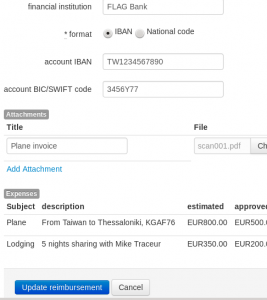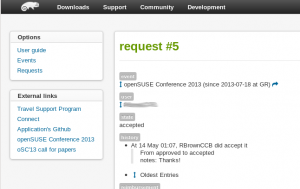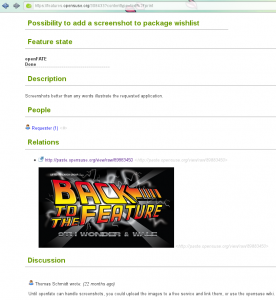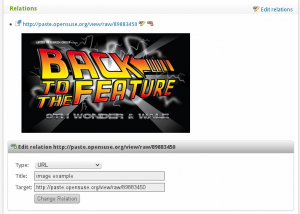In our previous summary, we talked about some basic research and some ground work to build on. This time we have some first exciting results!
openQA
Last week we rearranged the repository a little bit, creating a new branch called "devel" where all the exciting (and not so exciting) changes are taking place. Our little Factory 😉
The main difference between this branch as master is that, as you could read in the previous blog, the devel branch is openQA build on Mojolicious, a nice web development framework. And having a proper web framework is starting to show its benefits: we have openID login available! Unfortunately the current openSUSE openID provider is a little bit weird, so it doesn’t play well with our tool yet, but some others are working and openSUSE accounts will be the next step. Having working user accounts is necessary to be able to start defining permissions and to make openQA truly multiuser. And to be able to deploy the new version on a public server!
The other main focus of this week has been internal polishing. We have revamped the database layout and changed the way in which the different openQA components communicate with each other. The openQA functionality is spread out over several parts: the workers are responsible of actually executing the tests in virtual machines reporting the result after every execution; some client utilities are used to load new ISO images and similar tasks and, finally, we have the one openQA Server to rule them all. Until now, the communication between the server and the other components was done using JSON-RPC (a lightweight alternative to XML-RPC). We have dropped JSON-RPC in favor of a REST-like API with just JSON over plain HTTP. This change allowed us to implement exactly the same functionality in a way that is simpler, perfectly supported by any web framework, natively spoken by browsers and easier to authenticate (using, for example, plain HTTP authentication or openID). This is also the first step to future integration with other services (think OBS, as the ultimate goal is to use openQA to test staging projects).
But, who tests the tester? openQA is growing and changing quite fast so we have continued with the task of creating a good testing infrastructure to tests openQA itself to make sure that all our changes do not result in breakage. We only have a few tests right now, but we now have a solid foundation to write more and more tests.
Staging and package manipulation
In the last blog post we told you we were investigating a code test suite to test the abilities of a osc plugin we are writing. osc is the commandline tool for handling the Open Build Service, and this plugin is meant to help with the administration of staging projects. We’ve been thinking about how to move forward with the testing part as we want to make sure the functionality works as advertised. More important, we write tests to make sure that our additions and changes do not break existing functionality. We have started merging functionality from various scripts handling staging thingies and rings we had into this plugin. This is partially done so we can do basic staging project tasks! We can take a request (be it submit or delete) and put it to test in a staging project. We can also move packages between staging projects and we have a simple YAML in project descriptions to indicate what packages and what requests are there.
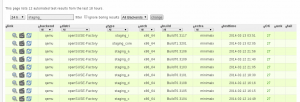
Coolo already started using the plugin for some tasks, so you can see pretty titles and metadata in staging projects descriptions. Not impressive enough? Let me provide you a good headline:
Thanks to staging projects, no single regression have been introduced this year in the core of Factory
You can enjoy a more detailed description in this announcement written by coolo to the Factory mailing list and have some visual joy in the included screenshot (genuine pr0n for QA engineers).
Last but not least, we also did some cleanup of the sources in the repo and of course we added more tests (as functionality grows). And there has been work on other parts of the plugin, like taking rings into account.
Result
We already have some useful functionality which we are going to expand and build on. Not that much to show yet, but we are progressing towards our goal. You can follow our progress either in the way of tasks (openQA and staging projects) or just follow our commit history on github (again for both openQA and staging plugin).
We are very much looking forward to feedback and thoughts – these changes aim to make Factory development easier and thus we need to hear from all you!

